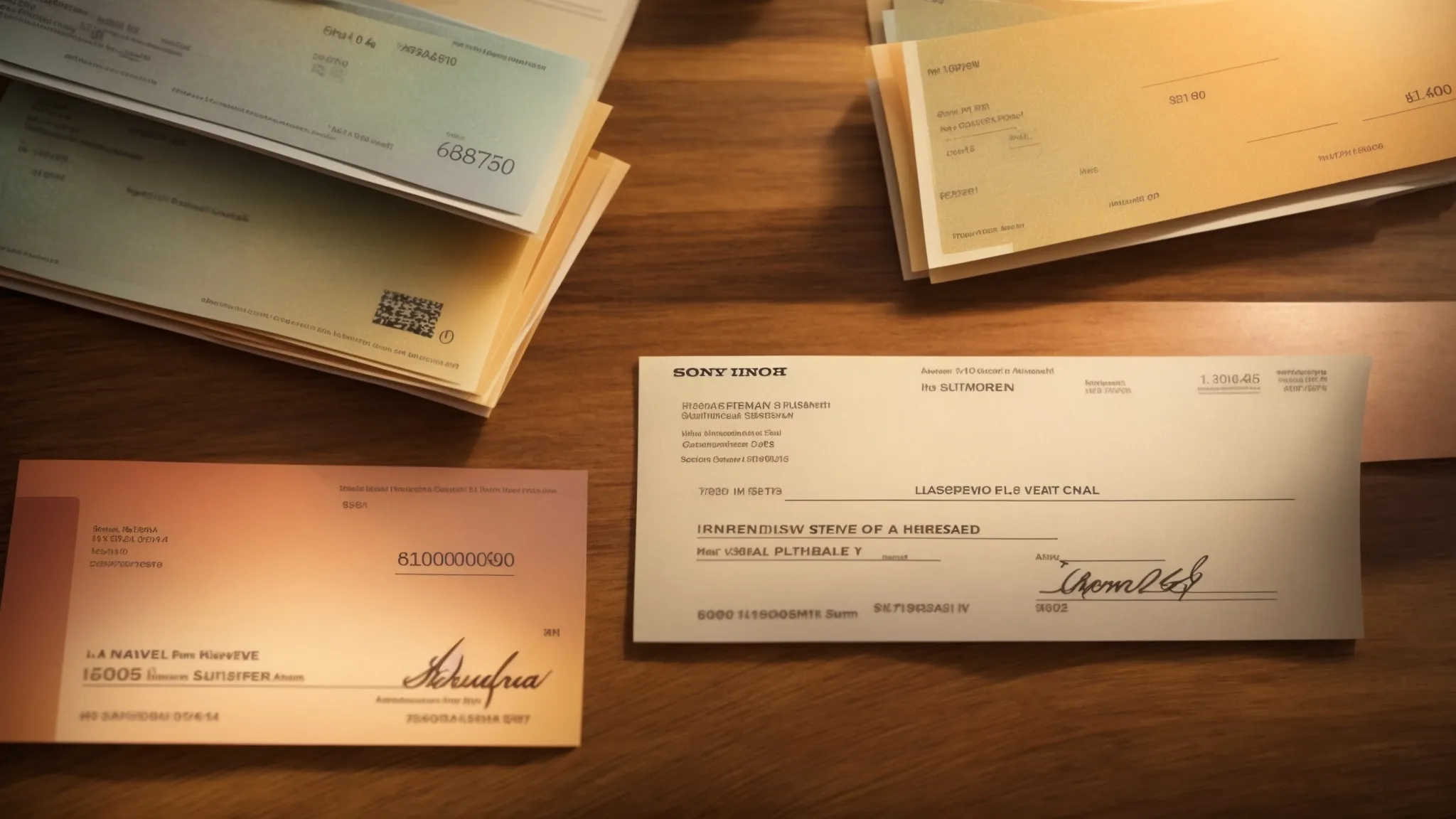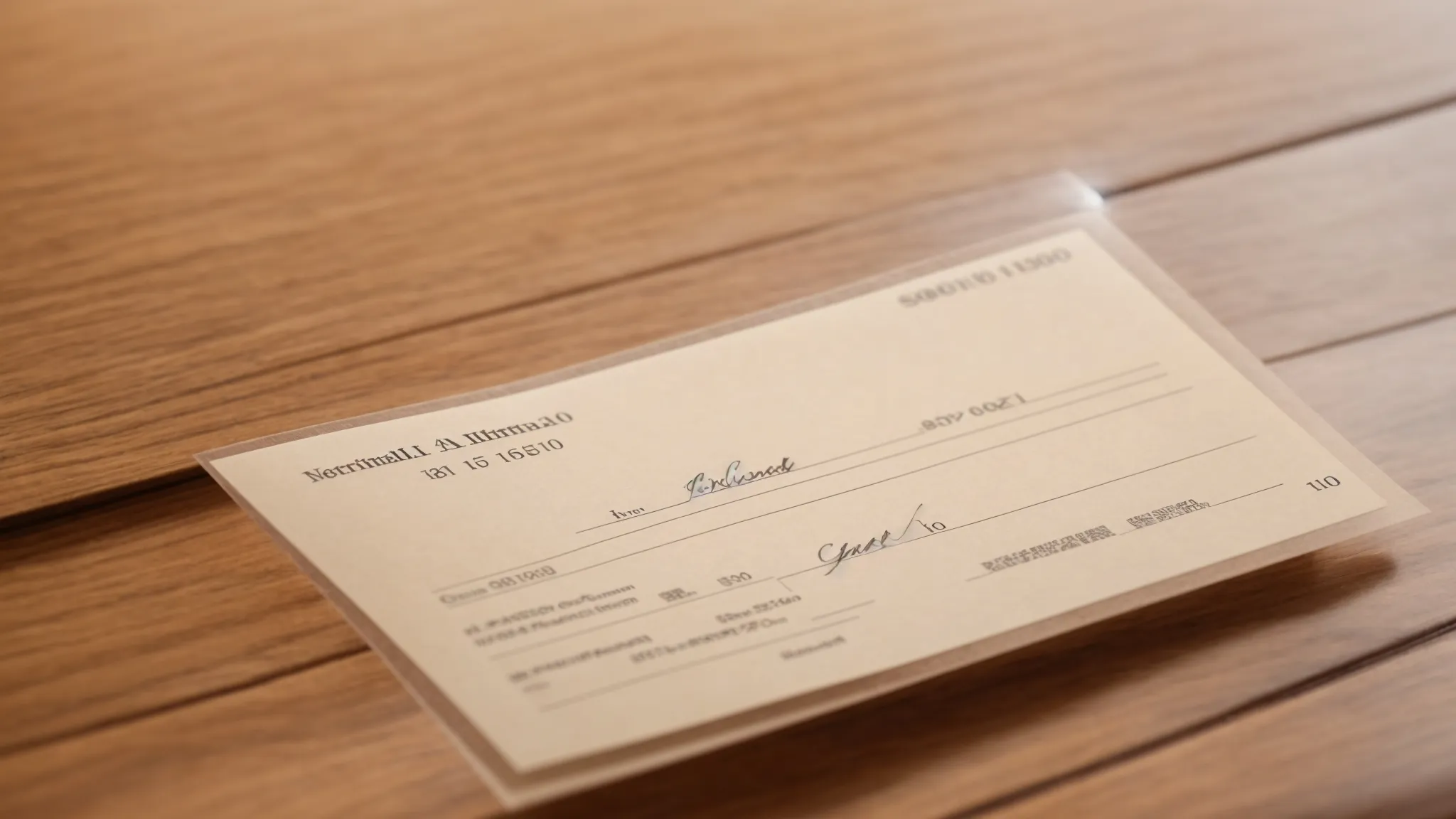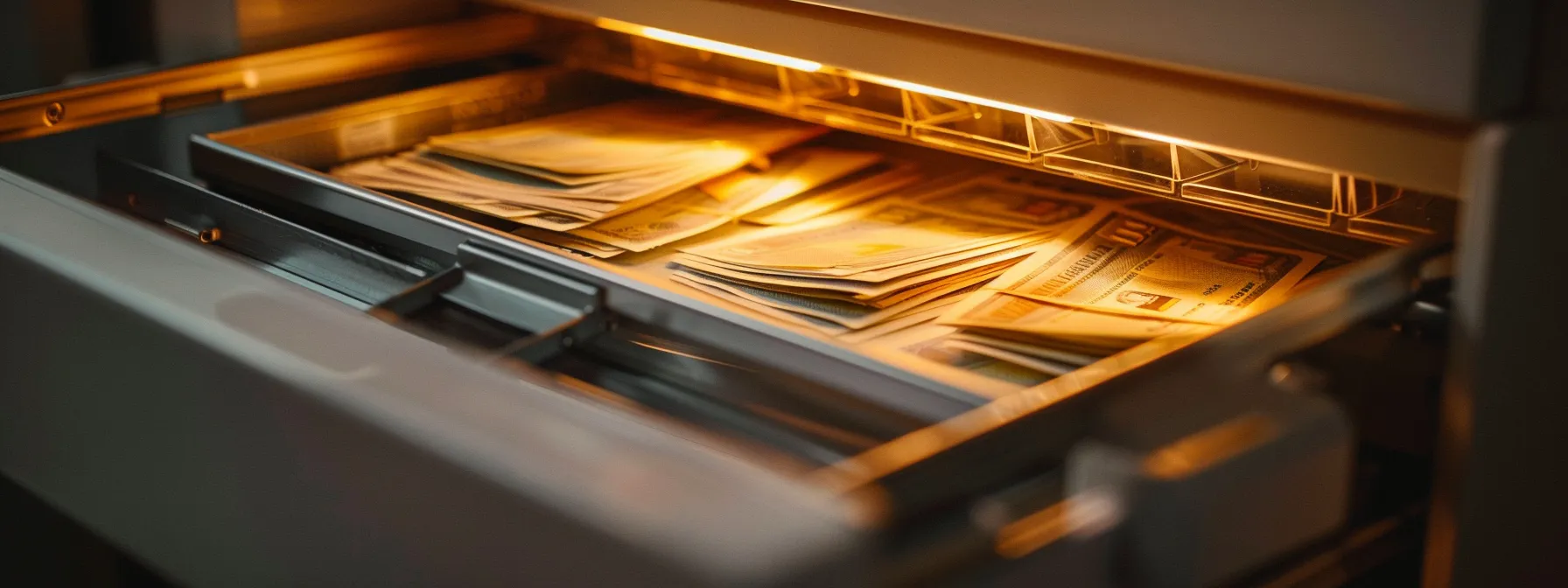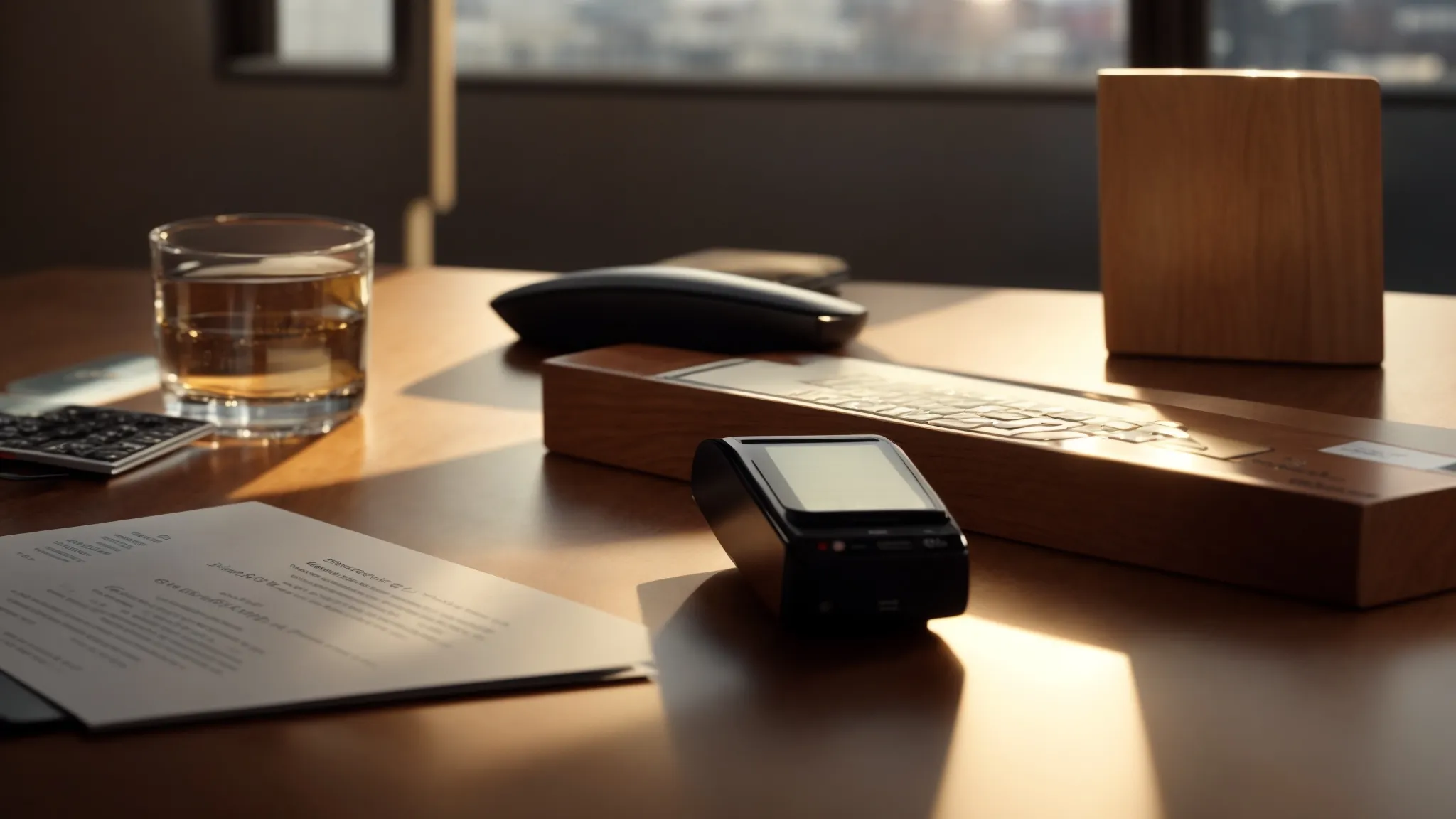Many small business owners face uncertainty when deciding how to manage payments. With options like invoices, cash, and wire transfers available, understanding cheque options can clarify the best choice for payment processing. This post will cover the different types of cheques, evaluate when they should be used, and outline security measures to protect your transactions. By learning more about these topics, readers will gain insight into optimizing payments while addressing concerns about safety and efficiency.
Understanding Different Types of Cheques for Payments

Different types of cheques serve distinct purposes, influencing how individuals manage their funds. Personal cheques are commonly used for everyday transactions, while certified cheques provide added security for significant payments. Cashier‘s cheques offer guaranteed funds from a financial institution, and traveller’s cheques are ideal for safe international travel. Finally, electronic cheques present a modern payment option, streamlining the payment process. Understanding these options helps choose the best payment plan.
Personal Cheques and Their Usage
Personal cheques are widely used for various transactions, offering a convenient option for individuals to make payments without needing cash. They can be employed for everyday expenses, such as paying bills or making a down payment on larger purchases. Unlike a money order or debit card, personal cheques allow authorized users to write a specific amount directly, providing flexibility in managing day-to-day finances.
For many, personal cheques also serve as a reliable method for depositing paychecks or reimbursing friends and family. They represent a direct line of communication between the payer and recipient, as individuals must track these transactions carefully. Understanding how to use personal cheques properly can assist in reducing the risks of lost funds or payment disputes, making them a practical choice for those looking to manage their money effectively.
Certified Cheques and How They Work
Certified cheques are a secure payment option used primarily for large transactions, such as purchasing a vehicle or paying for health insurance premiums. When a client requests a certified cheque, the bank verifies that the funds are available in the sender’s bank account before guaranteeing the payment. This process eliminates the risk of bounced cheques and reassures recipients that the currency will be readily available upon depositing the cheque.
While banks may charge a fee for issuing a certified cheque, the added security can be well worth the cost, especially for significant payments. Clients often find it more reliable than using a payment card, as it reduces the chances of payment disputes. Choosing a certified cheque can help streamline transactions and provide peace of mind when conducting financial dealings, making it an appealing option for many individuals and businesses alike.
Cashier‘s Cheques Explained
Cashier‘s cheques are a secure payment option ideal for significant transactions, offering peace of mind when larger amounts are involved. The funds for a cashier‘s cheque come directly from the bank, making them a dependable choice for those making international payments or requiring financial aid for important purchases. For example, when someone needs to pay a deposit for a rental property or complete credit card payments, a cashier‘s cheque can simplify these transactions by ensuring immediate availability of funds without the risk of bouncing.
These cheques are also favored in employment situations, where a hiring company may require proof of funds for a signing bonus or contract-related payments. They provide a clear and efficient way to handle transactions, as individuals can often request a cashier‘s cheque at their bank by presenting a valid ID and their email address for confirmation of the transaction. This practical approach to payment reinforces trust between parties engaged in significant financial dealings, making cashier‘s cheques a popular choice for various needs.
Traveller’s Cheques and Their Benefits
Traveller’s cheques provide a secure method for accessing funds while traveling, minimizing the risk of theft or loss. These cheques can be easily replaced if lost, offering peace of mind to travelers. Those who frequently engage in international travel often find this option beneficial, as it allows them to avoid the high fees associated with credit cards or the complexities of using bank services in foreign countries.
In addition to their security advantages, traveller’s cheques can serve as a practical choice for managing expenses like payroll for workers overseas or funding renewable energy projects. Their straightforward usage aligns well with varied financial needs, making them a preferred option for both leisure and business travel. Choosing traveller’s cheques can enhance financial planning, ensuring that funds are accessible without the hassles of traditional banking systems.
Electronic Cheques: A Modern Alternative
Electronic cheques provide a contemporary method for conducting transactions, offering convenience and efficiency. Unlike traditional methods, electronic cheques can be processed quickly, allowing individuals to make payments directly from their bank accounts without the need for physical cheques. This option is especially beneficial for students managing their finances through student accounts or parents managing funds in a 529 plan, as it simplifies payments for tuition and other educational expenses.
Additionally, electronic cheques are more secure than carrying cash and can easily replace the need for cashier’s cheques or wires, reducing the risk of theft or fraud. They also enable users to track and manage their payments effectively, whether they are purchasing supplies for school or funding projects abroad. By choosing electronic cheques, users can streamline their payment processes and ensure that their funds are safe and readily available when needed.
Now that the types of cheques are clear, it’s time to think about when they should be used. Understanding the right moments to write a cheque can save time and money.
Evaluating When to Use Cheques

Cheques can be advantageous in various situations, such as making a certified check for larger transactions or facilitating remittance for installment payments. However, it is essential to consider risks and alternatives, especially when dealing with authorized payments or payments to a bursar. Understanding when to avoid cheques is equally important for fostering effective financial management.
This section will examine the preferred situations for using cheques, outline the risks involved, compare cheques to other payment methods, and guide users on when it might be best to choose alternatives.
Situations Where Cheques Are Preferred
Cheques are often preferred for recurring monthly payments, such as rent or utility bills. By using cheques, individuals can create a tangible record of their transactions, which can be useful for tracking expenses and ensuring timely payments. This method also provides an added layer of security, reducing the risks associated with carrying large sums of cash.
Another situation where cheques are advantageous is in managing net metering agreements for renewable energy users. When homeowners receive payments from their utility provider for surplus energy, they may opt to use cheques to facilitate the transaction. This approach can provide clear documentation and ensure proper record-keeping, which is essential for both financial planning and tax purposes.
Risks and Considerations With Cheque Payments
Cheque payments come with inherent risks that individuals and businesses should consider. One primary concern is the possibility of a bounced cheque, which can occur if the payer does not have sufficient funds in their account. This situation not only results in additional fees but can also damage relationships between parties and complicate financial records.
Another consideration is the potential for cheque fraud, including forgery or alterations. Safeguarding against these risks often requires additional security measures, such as using certified cheques or implementing strict tracking of personal cheques. Being aware of these risks allows individuals to make informed choices about when and how to use cheques in their financial transactions.
Comparing Cheques to Other Payment Methods
When comparing cheques to other payment methods, such as credit cards or electronic transfers, it becomes evident that each option serves different purposes. Cheques provide a tangible record of transactions, appealing to those who prefer a physical document for bookkeeping. In contrast, electronic transfers often allow for faster processing times, making them more suitable for urgent transactions where immediate payment is essential.
Another consideration is the level of security offered by each payment type. Cheques can be susceptible to fraud if not handled properly, necessitating caution during their use. On the other hand, electronic payment methods typically utilize advanced encryption to protect user information, which can offer peace of mind for individuals concerned about financial safety. By analyzing these differences, users can make informed decisions about which payment method aligns best with their financial needs.
Understanding When to Avoid Cheques
Cheque usage may not be ideal in various situations, particularly when dealing with urgent payments or transactions that require immediate confirmation. For instance, using a personal cheque for rent or utility bills can lead to delays in processing, potentially resulting in late fees or service interruptions. Individuals and businesses may benefit from considering electronic payment methods or credit cards, which offer faster processing and immediate fund transfers.
Moreover, avoiding cheques is advisable when significant amounts are involved, particularly due to the risk of fraud or bounced payments. In scenarios where parties lack established trust or relationships, opting for more secure payment forms, such as certified or cashier‘s cheques, can provide better protection and peace of mind. This awareness enables individuals to navigate their payment options effectively while minimizing risks associated with cheque transactions.
Deciding when to use cheques is just the start. Understanding how to write and issue them will sharpen your business skills and keep everything running smoothly.
The Process of Writing and Issuing Cheques

This section provides a comprehensive guide on the process of writing and issuing cheques, highlighting essential steps to follow. It covers common mistakes to avoid during cheque issuance, ensuring accuracy and efficiency. Additionally, strategies for tracking payments made by cheque will be discussed, enhancing financial management. Understanding these steps will help individuals navigate cheque options effectively and reduce errors in their payment processes.
Step-by-Step Guide to Writing a Cheque
Writing a cheque requires careful attention to detail to ensure it is valid and can be processed without issues. Start by clearly writing the date in the designated area at the top right corner, followed by the name of the payee on the line that states “Pay to the order of.” This step is crucial, as it identifies who will receive the funds and prevents unauthorized individuals from cashing the cheque.
Next, indicate the amount to be paid in both numerical and written form. For example, if the cheque is for $150.00, write “One hundred fifty and 00/100” on the line below the payee’s name. Lastly, sign the cheque at the bottom right corner to authenticate it. By following these steps, individuals can confidently issue cheques while ensuring they meet the necessary standards for successful payment processing.
Common Mistakes to Avoid When Issuing Cheques
One common mistake when issuing cheques is neglecting to verify that the payer’s account has sufficient funds. Without this crucial step, the risk of issuing a bounced cheque increases, which can lead to additional fees and damage professional relationships. Individuals should always confirm their account balance before writing a cheque, ensuring smooth transactions and maintaining financial integrity.
Another frequent error is failing to provide complete information on the cheque itself. Omitting details, such as the date or the payee’s name, can complicate the cashing process and may result in the cheque being rejected. Ensuring all necessary fields are filled out correctly not only expedites payment but also minimizes the potential for misunderstandings, making cheque issuance straightforward and efficient.
Tracking Payments Made by Cheque
Tracking payments made by cheque is essential for maintaining accurate financial records and ensuring all transactions are accounted for. Individuals or businesses can employ a simple method by keeping a cheque register, where they log each cheque issued, including the payee, date, and amount. This practice not only assists in managing cash flow but also provides a clear overview of outstanding payments, reducing the risk of losing track of important financial commitments.
Another effective strategy for tracking cheque payments is to regularly reconcile bank statements. By comparing the issued cheques with the transactions reflected in the bank statement, individuals can quickly identify any discrepancies or bounced cheques. This proactive approach helps businesses maintain financial integrity and can alleviate potential disputes with payees, ensuring a smooth payment process that fosters trust within financial relationships.
Writing cheques is just one part of the financial landscape. Understanding the security measures behind them is essential to protect your business and keep payments safe.
Security Measures for Cheque Payments

Protecting oneself from fraud is crucial when using cheques. Safeguarding cheques involves simple practices, such as using secure storage and monitoring transactions. Understanding the legalities of cheque payments is equally important to ensure compliance and protection. This section will discuss practical strategies to prevent fraud, effective ways to secure cheques, and essential legal considerations to make informed payment decisions.
Protecting Yourself From Fraud
To safeguard against cheque fraud, individuals should implement secure storage practices for their cheques. Utilizing a locked drawer or safe can prevent unauthorized access and reduce the risk of theft. In addition, monitoring bank statements regularly helps to promptly identify any unauthorized transactions, ensuring that issues can be addressed swiftly.
Being vigilant about cheque details is another crucial aspect of fraud prevention. Individuals should be cautious while issuing cheques, ensuring they only provide them to trusted parties and double-checking payee names and amounts to avoid errors that could lead to fraud. By adopting these protective measures, cheque users can navigate their payment options with confidence, minimizing the risks associated with fraud.
How to Safeguard Your Cheques
To effectively safeguard cheques, individuals should store them in a secure location, such as a locked drawer or safe, to prevent unauthorized access. This simple measure not only reduces the risk of theft but also helps protect sensitive information, ensuring that personal and financial details remain confidential. Regularly monitoring bank statements can further enhance security by allowing users to quickly identify any unauthorized transactions linked to their cheques.
When issuing cheques, it’s crucial to double-check all details, including the payee’s name and the amount, before sending them out. This diligence helps to prevent errors that could open the door to potential fraud. Utilizing cheques only with trusted recipients builds a strong foundation for secure transactions, allowing individuals to navigate their payment options confidently while keeping their financial information safe.
Understanding the Legalities of Cheque Payments
Understanding the legalities of cheque payments is essential for both individuals and businesses. Cheques are governed by laws that define their validity and enforceability, impacting how they can be used in transactions. For instance, ensuring that a cheque includes all required information, such as the date, payee, and signatures, helps protect against potential disputes regarding payment responsibilities.
Furthermore, laws also dictate the handling of bounced cheques, which can incur penalties or legal repercussions for the issuer. Familiarizing oneself with the specific regulations in their region can aid users in navigating cheque payments safely and complying with legal requirements. Recognizing these legal aspects is a vital step in mitigating risks associated with cheque payments, ultimately contributing to more secure financial dealings.
As security measures evolve, so does the way we handle cheque payments. The rise of technology is reshaping this landscape, introducing new methods that promise both ease and efficiency.
Impact of Technology on Cheque Payments

The rise of digital cheque solutions has transformed traditional payment methods, offering innovative alternatives for businesses and individuals. Electronic cheques provide numerous advantages, including enhanced security and faster processing times. As technology advances, future trends in cheque payments are expected to further streamline financial transactions, making it essential to understand how these developments can impact payment choices.
The Rise of Digital Cheque Solutions
The rise of digital cheque solutions is reshaping how individuals and businesses manage their payments. With electronic cheques, users can transfer funds directly from their bank accounts without needing physical cheques, which streamlines the transaction process and enhances efficiency. This modern approach offers a convenient option for those balancing busy schedules, simplifying payments for everyday expenses like bills and payroll.
Additionally, digital cheque solutions come with enhanced security features that reduce the risk of fraud. For instance, electronic cheques can utilize encryption technology, allowing users to track their payments and manage funds more effectively. This immediate accessibility not only fosters better financial management but also meets the needs of a fast-paced environment, making digital cheques an appealing choice for anyone looking to simplify their payment processes.
Benefits of Using Electronic Cheques
Electronic cheques offer significant advantages for both businesses and individuals, streamlining payment processes and enhancing efficiency. By enabling users to send payments directly from their bank accounts, electronic cheques eliminate the need for physical handling and mailing, which can save time and reduce transaction delays. This convenience is especially valuable for recurring payments or for those managing multiple financial commitments, as it allows for seamless transactions without the added burden of writing and mailing traditional cheques.
Security is another notable benefit of electronic cheques. With advanced encryption technology, these digital payments are less susceptible to fraud compared to paper cheques. Users can maintain oversight of their transactions, as electronic cheques often come with tracking capabilities, ensuring peace of mind when managing financial operations. This secure and efficient method meets the evolving needs of today’s fast-paced environment, making it a practical choice for those seeking reliable payment solutions.
Future Trends in Cheque Payments
As technology advances, the future of cheque payments is shifting towards increased integration of digital solutions. The development of mobile applications and online platforms allows individuals and businesses to issue electronic cheques with ease, streamlining the payment process. These modern solutions not only enhance convenience but also reduce the environmental impact associated with printing and mailing traditional cheques.
Additionally, trends in security measures are evolving to address growing concerns about fraud and data breaches. The incorporation of advanced encryption and biometric authentication features into digital cheque processing creates a more secure environment for transactions. This focus on security, combined with user-friendly technology, makes electronic cheques a more attractive option for both consumers and businesses looking to modernize their financial practices.
Technology has changed how we handle cheque payments. But with so many options available, choosing the right method for your business can make all the difference.
Making the Right Choice: Cheques vs. Other Payment Options

Cheques offer numerous benefits for managing payments, including convenience and a tangible record of transactions. However, in certain situations, other payment methods may provide advantages, such as speed or added security. Understanding personal preferences and financial strategies can help determine the best approach. The following sections will delve into the benefits of using cheques, scenarios where alternative options excel, and how individual choices influence payment decisions.
Benefits of Using Cheques for Payments
Using cheques for payments provides several advantages that suit the needs of both individuals and businesses. Cheques offer a tangible record of transactions, making it easier to track expenses and manage finances. This documentation is especially useful for business owners who need to maintain accurate financial records for tax purposes and company audits. The ability to issue cheques also helps mitigate cash handling, reducing the security risks associated with carrying physical money.
Another benefit of using cheques is the flexibility they provide in payment arrangements. For example, businesses can schedule payment dates for invoices as needed, allowing for better cash flow management. Additionally, the possibility of utilizing certified or cashier‘s cheques enhances security for larger transactions, giving peace of mind to both parties involved. These aspects make cheques an appealing option when making payments in various settings, ensuring a reliable method tailored to meet diverse financial needs.
Scenarios Where Other Payment Methods Shine
There are situations where other payment methods provide clear advantages over cheques. For example, when making urgent payments, such as utility bills or rent, electronic transfers can ensure instant fund availability, avoiding potential late fees. In these cases, the speed and efficiency of digital payments significantly outweigh the traditional cheque process, which can take longer to clear.
Additonally, businesses often find that credit cards offer enhanced security and rewards for regular expenses. Using credit cards to make business purchases allows owners to earn cashback or points, which can contribute to future savings. This flexibility can be particularly beneficial for companies looking to optimize their cash flow and manage expenses effectively while taking advantage of incentives associated with credit transactions.
Personal Preferences and Financial Strategies
Personal preferences and financial strategies play a significant role in determining the best payment method for individuals and businesses. For those who value tangible records, using cheques can provide a clear paper trail that simplifies tracking expenses and enhances financial organization. This can be especially beneficial for small businesses during tax season, as having documented transactions streamlines the reporting process and promotes accountability.
Moreover, individuals with varying cash flow situations might find that integrating cheques into their payment strategies aids in managing budgets effectively. By scheduling payments through cheques, business owners can control their cash outflows and avoid overspending. Understanding one’s own financial habits and objectives can guide users toward choosing the most appropriate payment method, ensuring decisions align with their unique financial circumstances and preferences.

